
The earwig, an overlooked ally for the garden
Getting to know the earwig
Contents
The earwig is an insect that can be observed in our gardens. Despite its name, which makes it sound a bit frightening, and its beautiful pair of pincers, the earwig is considered harmless and provides services that gardeners may not suspect. Discover the lifestyle of the earwig, this unique insect, as well as its usefulness as a beneficial insect in your garden.
The earwig, an insect that doesn't go unnoticed
The earwig is sometimes also called the pincher or forficule. It belongs to the family Forficulidae, which is part of the order Dermaptera. In France, there are about twenty species, the most common being Forficula auricularia. It is recognised by its slender body, which is orange-brown in colour, and especially by the pair of pincers at the end of its abdomen. Known as cerci, these pincers are larger and more curved in males than in females. The earwig measures 1 to 2 cm in length and has a shiny body. It has grinding mouthparts, long antennae, and small wings, although it never flies.
The name earwig may come from the fact that it is often found in the stones of apricots or peaches. The two parts that make up the peach or apricot are sometimes called ears or earlets, and this insect, which is fond of them and enters them, may have been nicknamed earwig. The origin of this name could also be due to its resemblance to a device used for piercing ears.
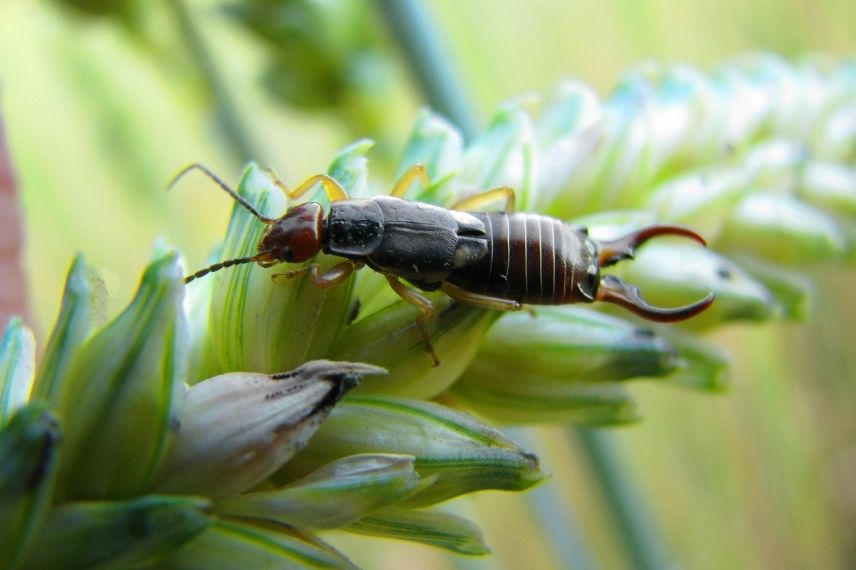
Forficula auricularia
Where does the earwig live?
The earwig is a nocturnal creature as it dislikes light. It also prefers cool and damp places. During the day, it hides under leaves, the bark of a tree, under stones, a pile of wood, in the stone of a fruit, or the petals of a flower.
The female is distinguished by the careful attention she gives to her young. She lays a string of eggs in the soil and continuously cleans them until they hatch into larvae. She looks after the larvae until summer, when the young insects can begin to live independently.
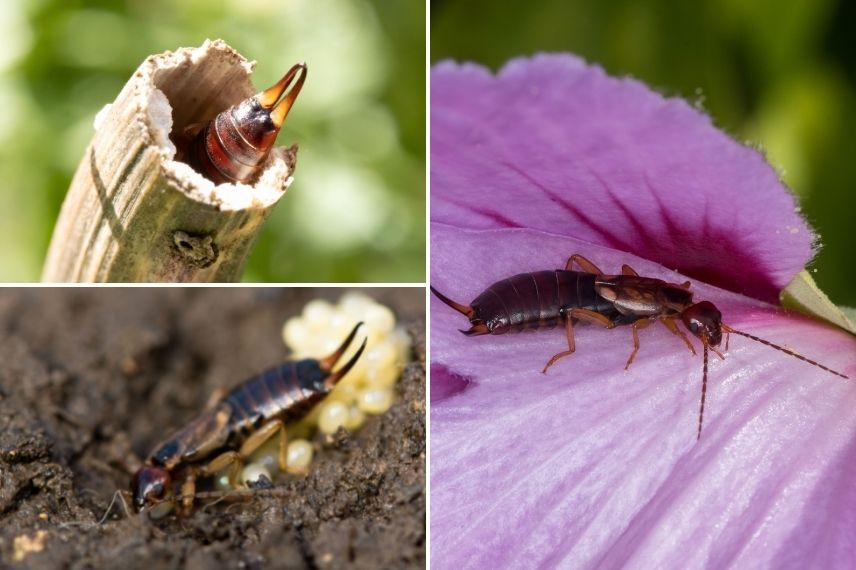
The earwig finds various hiding places to protect itself from the light. A female and her eggs (bottom left)
What does the earwig eat?
It is an insect that feeds on small plants, flowers, and fruits, as well as other insects like aphids and psyllids, which are parasitic to fruit trees, along with larvae and caterpillars. It particularly enjoys decomposing matter such as very ripe fruits.
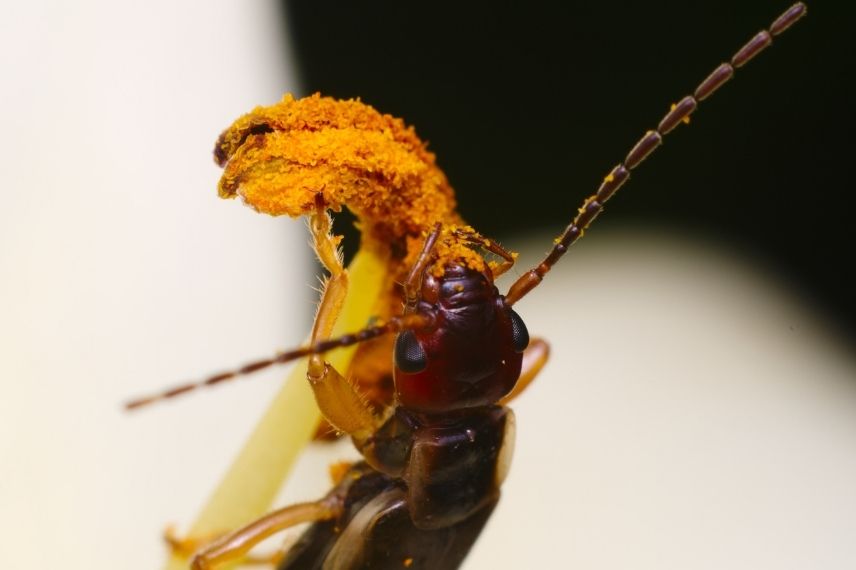
Earwig enjoying pollen
What is the usefulness of the earwig in the garden?
Despite its appearance and name, which may not necessarily encourage a closer look, the earwig is considered harmless and is even used as a beneficial insect in the garden. Indeed, it devours aphids and other pest insects that harm plants, much like ladybirds.
How to attract it to your garden?
If you want to get rid of aphids or psyllids that are invading your flowers or fruit trees, try attracting earwigs by setting up a shelter made from a clay pot filled with straw and covered with mesh or a filament to prevent the straw from falling out. The nocturnal earwig takes refuge during the day in a dark, damp place like this. At night, it will emerge from its shelter and eat the pests on your plants.
Once the earwig has finished clearing your plants of aphids, you can move it to other infested plants or bushes simply by relocating the pot filled with straw, which serves as its shelter, to the plants that need treatment. For bushes, you can hang the pot from a branch using string or wire threaded through the drainage hole. Handy, isn’t it?
Remember to regularly move your earwig pots, as these insects also enjoy young plants and fruits and may well take an interest in them when the aphids run out.
This shelter requires little maintenance, other than changing the straw once a year.
You can also simply provide earwigs with stones or a pile of wood near the plants you wish to protect from pests.
Of course, if you want to keep this valuable company, you will need to completely eliminate the use of insecticides, otherwise your earwigs will not survive.
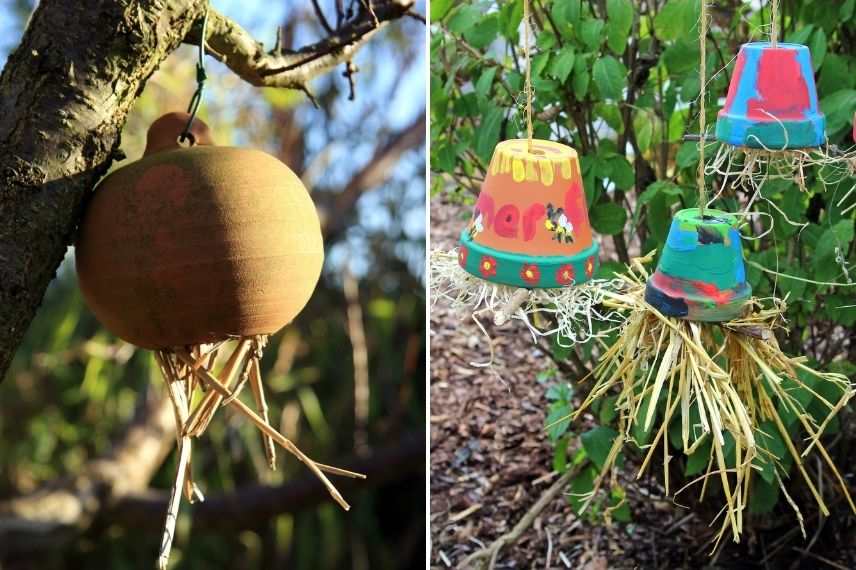
Creating a shelter for earwigs can be fun and enjoyable for children
- Subscribe!
- Contents
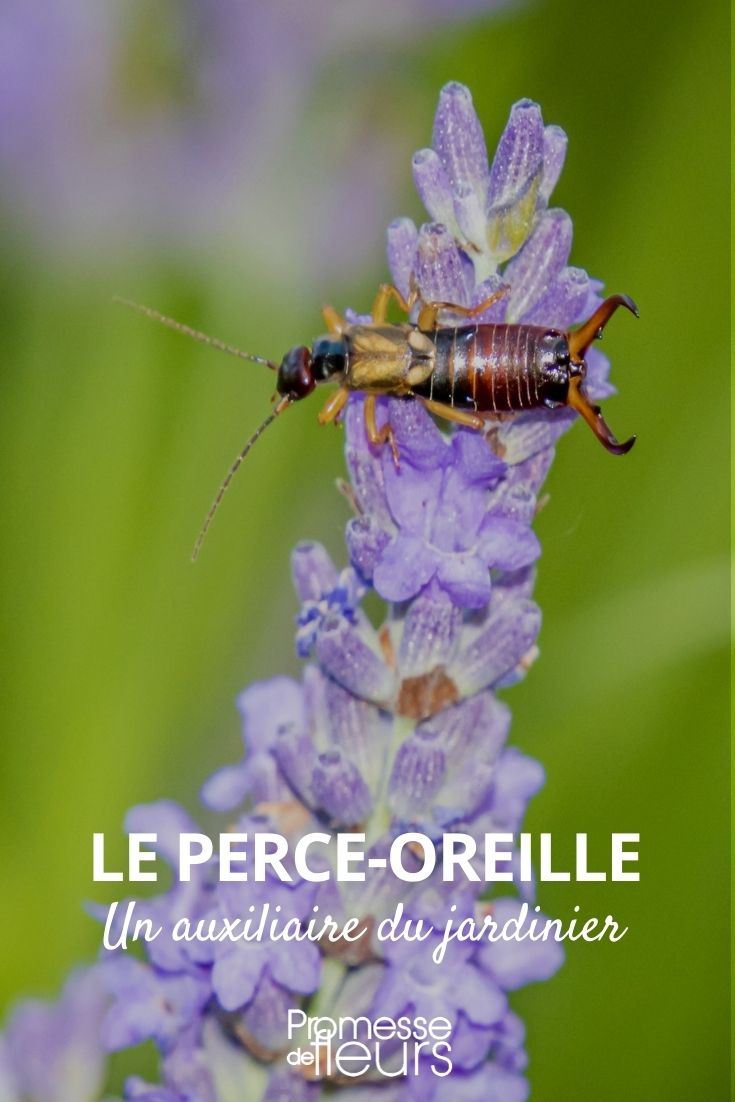































Comments